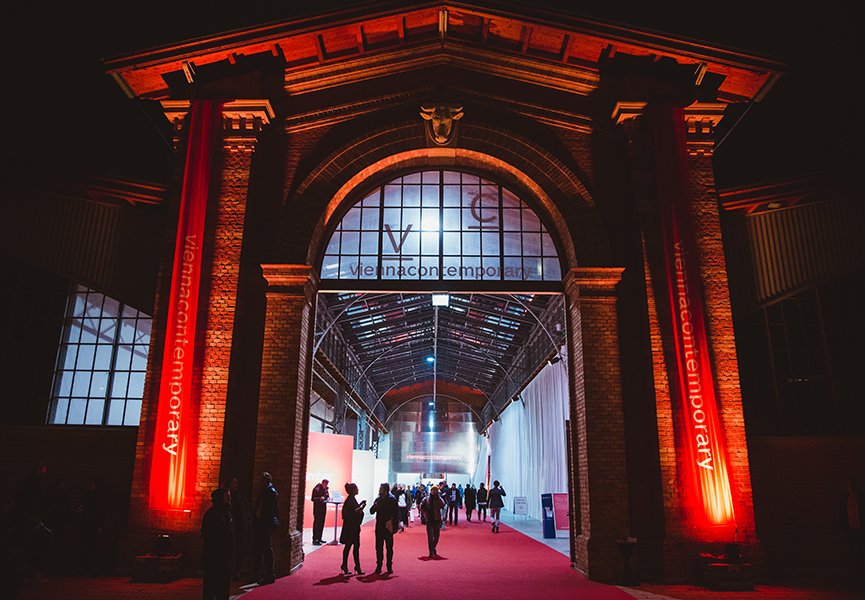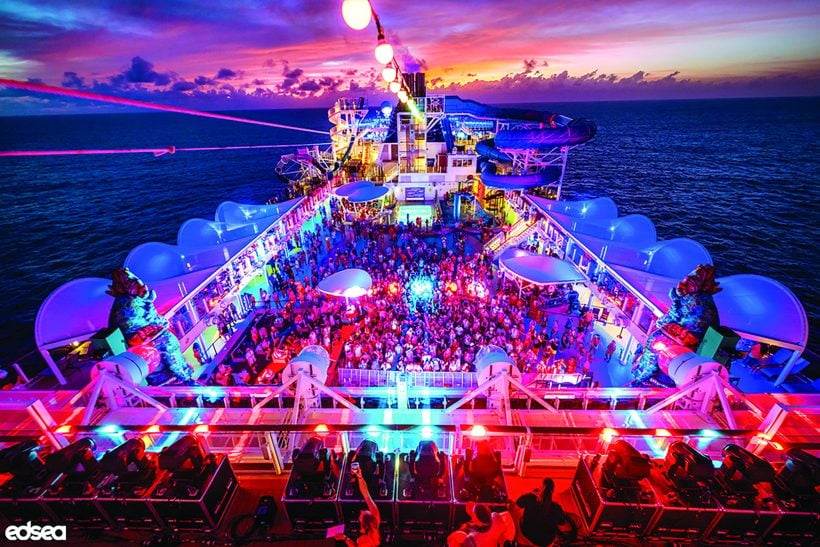From September 22 through 25, the Viennacontemporary art fair will take over its namesake city. Primarily showcasing Central and Eastern European artists and galleries, the fair, previously known as ViennaFair, is now in its second year as Viennacontemporary. While ViennaFair mostly attracted locals, Viennacontemporary last year welcomed more than 28,000 visitors and enjoyed positive reviews from critics—a major success, as the primary goal of the fair is to establish the region’s art as globally significant.
Among the changes the fair’s organizers have implemented are a fixed date on the calendar—previously the show had a fluctuating schedule—a new venue at the storied Marx Halle in downtown Vienna, and more specialized services for visiting collectors and gallerists.

Worth spoke with the fair’s chairman, Russian real estate mogul Dmitry Aksenov, and its artistic director, Christina Steinbrecher-Pfandt.
Why should collectors include Viennacontemporary in their calendar?
Christina Steinbrecher-Pfandt: Understanding of Eastern Europe is very blurry for most people [in the West]. We offer an overview so you see the best art of all these countries in one spot.
Dmitry Aksenov: And it’s very affordable because it’s still a growing market.
Why were you interested in taking over a contemporary art fair?
DA: The opportunity came to buy the license to this fair from Reed Exhibitions. The challenge was that the whole team was new, and the concept for me was new. I wanted to narrow the gap between Western and Eastern European cultures. You need to bring them together. I thought the fair would be a good opportunity for knowledge practices and also to expose Russian contemporary culture to the West.
“We have built a different image of Vienna. People are now coming back year after year.”
Had you always been interested in contemporary art?
DA: Some eight years ago, by accident, I started to get interested in it. In the Soviet era, our culture was disconnected from the global perspective on visual art. We had classical art and social realism, not much modernism or even abstract art. So nobody in Russia was aware about contemporary art—except maybe some niche professionals and those who had the means to get involved. That was me eight years ago. I had money but no time, and I had no understanding of what it was all about.
How did you become involved?
DA: A friend of mine from university became an interior designer in Riga, Latvia. I asked him to do some work in my home. We had empty walls, and he put up some abstract paintings. But I thought it needed horses or trees or something… I had to take background studies to know where this all came from. I took art history and history of culture in general. I educated myself about it.

So how do you make Viennacontemporary more international?
CSP: First, we get Vienna to be recognized as a contemporary city. People would visit and cross it off their to-do list, but never view it as a motor that would provide a constant stream of exciting events to see every year. It was just something historic. We have built a different image of Vienna. People are now coming back year after year.
What about the fair itself?
CSP: The fair had run for a few years when we came in, but there was not enough demand. The art presented didn’t really have international aspirations. What we did was we upgraded the offering, as well as the service to exhibitors and collectors. The service we offer is better than what you get at the big fairs.
In what way?
CSP: In terms of people. If we get a request, no matter what it is, we answer it. There are a number of instruments in the city that are contemporary. So we built exciting programming around it. People need to get the association that Vienna is a center for contemporary arts. We have museums doing amazing work [such as Mumok, Mak and Albertina].
DA: We really have a tailor-made experience for ultra high net worth individuals. I meet people and help them experience the fair and Vienna throughout the year. Bringing relevant people to meet [other] relevant people. [At other fairs] nobody meets Russian collectors. At Basel or Frieze, you don’t have that specific focus. This East-West relationship has worked well for both sides, for people to meet cultured and educated Russian entrepreneurs or institutional heads.
Viennacontemporary runs from September 22 to 25. Contact Katharina Apburg, head of VIP Relations, [email protected], 43.699.1933.3328, viennacontemporary.at








